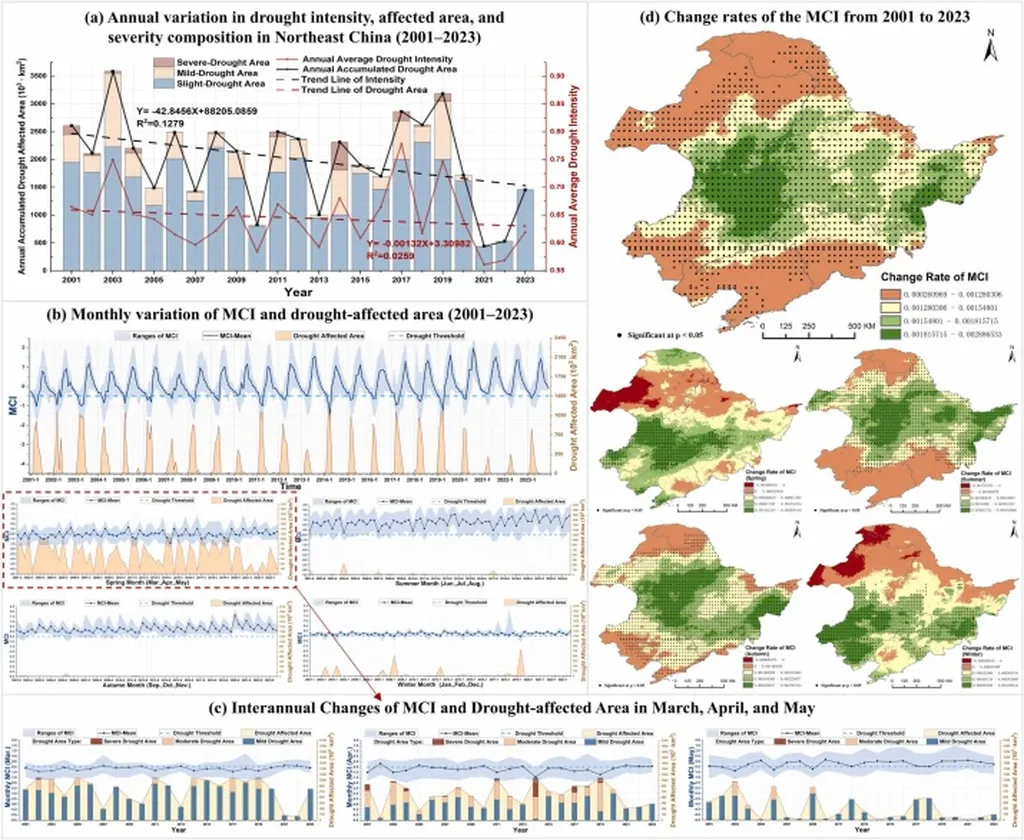In the vast, fertile expanses of Northeast China, a critical interplay between meteorological and agricultural droughts is unfolding, with profound implications for sustainable agriculture and the energy sector. A groundbreaking study, led by Tianchi Yu of the School of Water Conservancy and Civil Engineering at Northeast Agricultural University, has shed light on the complex feedback mechanisms between these two types of droughts, offering valuable insights for future mitigation strategies.
The research, published in the journal ‘Agricultural Water Management’ (translated as ‘农业水资源管理’), quantifies meteorological drought using the Standardized Precipitation Index (SPI) and agricultural drought through the Standardized Soil Moisture Index (SSI). By employing advanced statistical methods, including the Copula function, Random Forest method, and SHAP value theory, the study provides a nuanced understanding of drought dynamics in Northeast China from 2000 to 2023.
One of the most striking findings is the significant seasonal variation in the correlation between SPI and SSI. “Summer shows the strongest positive correlation, with August reaching a peak of 92.18%,” explains Yu. This high correlation indicates that meteorological droughts, characterized by low precipitation, directly impact agricultural droughts, as soil moisture levels plummet. Conversely, winter exhibits the weakest association, suggesting a more complex interplay of factors during colder months.
The study also reveals marked spatiotemporal differences in the reciprocal feedback relationship between meteorological and agricultural droughts. Positive feedback dominates in the southwestern part of the Songnen Plain, while negative feedback prevails in the Liaodong hills region. Temporally, August emerges as a critical month, with 37.11% of the feedback relationships falling within the stable positive feedback threshold range of [0.5–2].
These findings have significant commercial implications for the energy sector, particularly for agricultural and bioenergy industries. Understanding the feedback mechanisms can help energy companies optimize water usage and develop more resilient crops, ensuring a stable supply of biomass for energy production. “Low precipitation, high temperature, low soil moisture, and high evapotranspiration significantly strengthen the negative feedback effect of agricultural drought on meteorological drought,” notes Yu. This insight is crucial for energy companies investing in agricultural lands, as it highlights the need for adaptive strategies to mitigate drought impacts.
The research also underscores the importance of cross-regional drought feedback analysis, providing a methodological framework for future studies. By elucidating the spatiotemporal interactions between different types of droughts, this study paves the way for more effective drought management and sustainable agriculture practices.
As global climate change continues to exacerbate drought conditions, the insights from this study are more relevant than ever. For the energy sector, understanding these complex feedback mechanisms is not just about mitigating risks but also about seizing opportunities for innovation and sustainability. By integrating these findings into their strategies, energy companies can contribute to a more resilient and sustainable future for agriculture and the broader economy.

